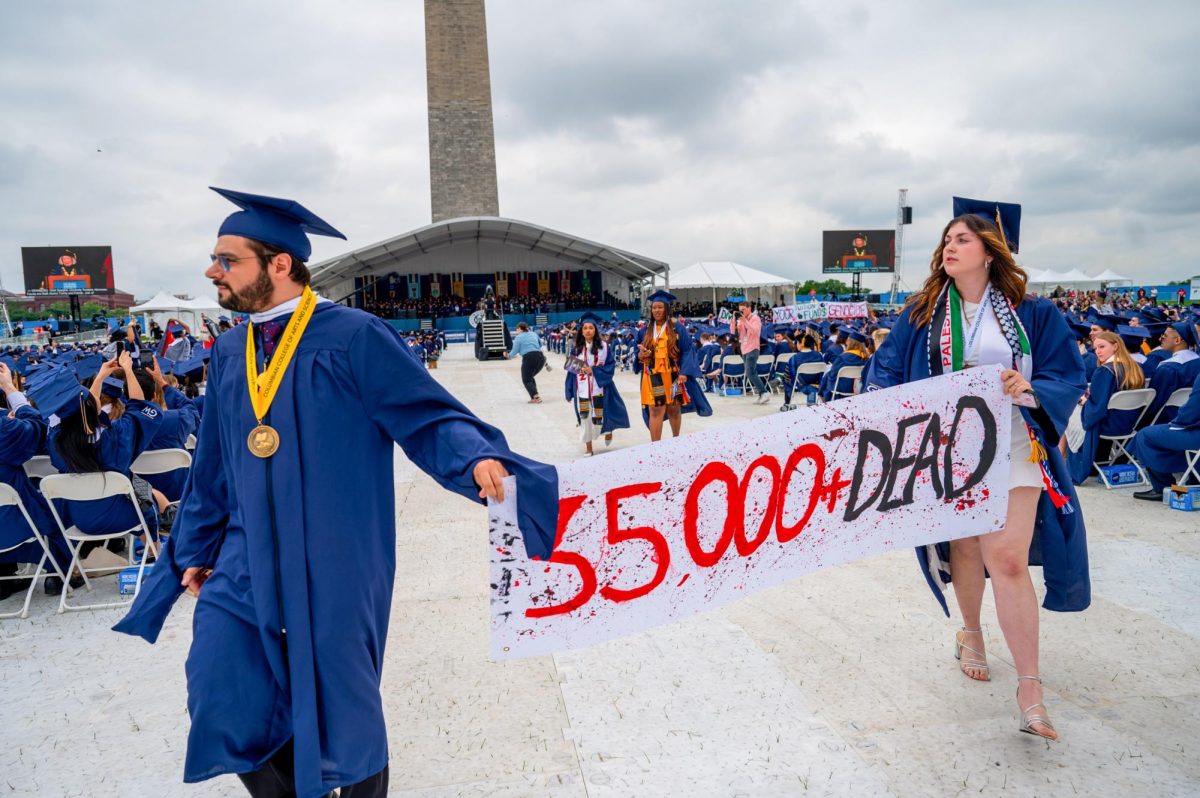Enrollment in the Russian language program has fallen 40 percent since the Columbian College of Arts and Sciences dropped its foreign language curriculum requirement last fall.
The dwindling enrollment brings the program dangerously close to eliminating class sections and part-time teaching positions, Russian language program director Richard Robin said.
“Our big fear is a cut in the number of sections, because we’d lose good teachers,” he said. “We have so far not had to close any sections, but we’re teetering on the brink.”
In just the last year, 20 percent fewer students have opted to take Russian, which counted about 107 students in its 11 class sections this fall.
Columbian College faculty approved a new general curriculum – dubbed G-PAC – two years ago, which stripped a foreign language requirement and barred most beginning language courses from its general requirement list. Administrators said then that introductory foreign language courses entail memorization rather than critical thinking.
Robin said the program has tried to promote itself, putting up posters in the Academic Center during the spring and courting incoming freshmen during Colonial Inauguration.
The director is one of two full-time professors in the Russian language program, and said Russian professors across the country have noticed that enrollment also fluctuates with the country’s presence in international headlines.
He said he thinks enrollment could have slumped even lower this year, but news that spread about Russian punk band Pussy Riot – which protested the country’s President Vladimir Putin – piqued some students’ interest in the language.
“When Russian disappears from the front pages, we lose enrollments,” he said.
Only freshmen and sophomores in Columbian College follow the G-PAC curriculum that went into effect last fall – decreasing the number of general credits from 42 to 24. The Elliott School of International Affairs and some majors in Columbian College, like history, still require a foreign language.
The impact of G-PACs on other smaller language programs at GW has varied. The Arabic program added a major and a minor this fall, a response to growing interest in the language.
Margaret Gonglewski, director of the German program, said she hasn’t seen “any dramatic change” in enrollments so far, but said that could change once the new curriculum is in place for all incoming students beginning fall 2014.
Young-Key Kim-Renaud, chair of the department of East Asian languages and literature, said enrollments in Japanese, Chinese and Korean have remained stable because of the popularity of the region.
But the Spanish and French language programs, which both had waitlists of about 100 students this fall, cannot keep up with student demand.
Both program directors said they have been limited by a lack of classroom space and new hires.
“I think all the language programs and departments are just trying to make the case with administration that we need to meet more resources, that we want to convert our part-time faculty into full-time faculty instructors,” Maria de la Fuente, director of the Spanish program said.
Peg Barratt, who is in her final year as Columbian College dean, said the college met the demand for language courses when she arrived in 2007 and “more than a million dollars was invested in new positions for teaching languages.”
Now, with foreign students flocking to the University and an emphasis on globalization in the upcoming academic strategic plan, Barratt said she expects more money to funnel into languages.
Elise Lee contributed to this report.






